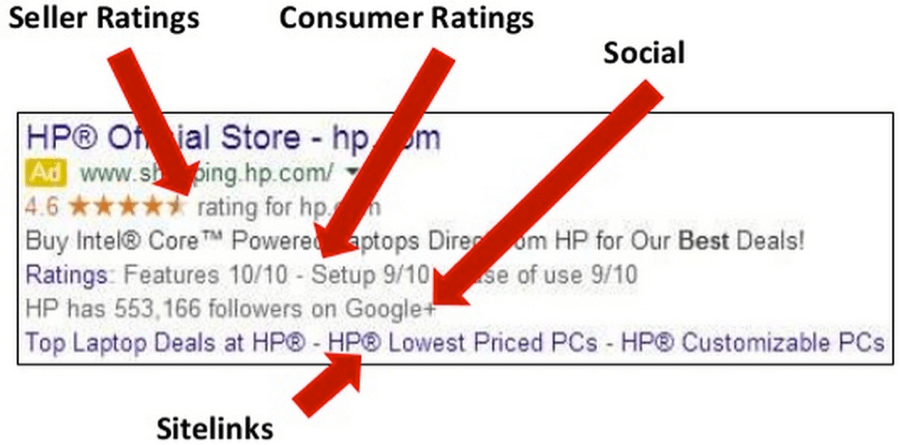How To Prioritize Your E-Commerce PPC Campaign Builds
Over the last couple of years, the prioritization of e-commerce PPC campaign builds has shifted dramatically.With the rise of Google Shopping and with dynamic solutions now available to advertisers, standard Search Network text-ad campaign builds fall down the priority list. In today’s world of e-commerce PPC, I prioritize my campaigns as follows: Google Shopping (Product […]
Over the last couple of years, the prioritization of e-commerce PPC campaign builds has shifted dramatically.
- Google Shopping (Product Listing Ads or PLAs)
- Remarketing (All Types)
- Search Network Text Ads & Ad Extensions
- Dynamic Search Ads (DSAs)
- Google Display Network
Google Shopping
According to RKG’s Q1 2014 Digital Marketing Report, PLAs accounted for nearly half of all non-branded paid search clicks. In addition, PLAs produced significantly higher ROI and conversion rates compared to non-branded text ads.In other words, having a well-maintained product feed with appropriately segmented Google Shopping campaigns is the cornerstone for successful e-commerce PPC accounts.Google Shopping is so important that my first request to the client is to be granted access to Google Merchant Center and the associated feed. I want these Shopping campaigns properly setup right away so they can hit the ground running. Managed correctly, these campaigns will yield fairly quick results, as click volume tends to be high while costs are generally lower than text ads.While setting up Google Shopping campaigns, you may also consider Bing Product Ads. Though click volume is still low, setup is similar to Google and is showing positive ROI.
Remarketing
There are six subsets of remarketing that are pivotal to campaign success. These subsets include:
- Standard Remarketing (static text and image ads)
- Dynamic Remarketing
- Standard Remarketing on Facebook
- Dynamic Remarketing on Facebook
- Remarketing for Dynamic Search Ads (RDSAs)
The theme is that we have both standard and dynamic versions of remarketing and RLSAs. The standard versions may produce good results (and are worthwhile to have), but the volume generally isn’t as high when targeting dynamically. Just like Google Shopping, getting to the product level with remarketing has significantly improved performance, especially cost per conversion.AdWords Dynamic Remarketing allows advertisers to create many types of audiences, which can have tiered bids. In other words, shoppers who abandoned their carts will yield a higher bid than those who simply viewed a product. Using Google’s predetermined audiences, here’s how a campaign structure may look with sample bids.
Volume wasn’t as high as Google and Bing, but results were in line, especially when looking at the campaign performance from a holistic perspective.RLSA and RDSA campaigns are also important to your >remarketing efforts. The latter uses the combination of Dynamic Search Ads (DSA) and Remarketing List for Search Ads.A DSA campaign is created and layered with a remarketing audience (I generally start with “all visitors”). The idea is that visitors who have already been to your site will see a highly-targeted, product text-ad across Google and it’s Search Partners while comparison-shopping.The concept is similar to Dynamic Remarketing, but applied to the Search Network. White Shark Media’s Andrew Lolk writes about some great results he saw while running this type of campaign.
Search Network Text Ads & Ad Extensions
Here, we enter more familiar territory, as text-ad campaigns are built around site categories, products, and any other theme. Here, we also research our keywords and segment them into themed ad groups and campaigns.Text ads still get a fair share of clicks on their own, but we also have the ability to implement ad extensions to make our ads stand out more. In fact, I’ve always found that overall, ad headline CTR increases whenever ad extensions are implemented. More than ever, it’s not necessarily the actual content that gets the click, but rather the prominence of the ad. Here is an example of a seven-line text ad utilizing four ad extensions.
I do want to emphasize that good text ads can still convert. As long as the ad speaks to the query and landing page, quality traffic will come through. Against other ad formats, text ads don’t stand out as much, but they still can be as relevant.
Dynamic Search Ads
My rule of thumb is that roughly 75% of your website should be represented in standard text ad campaigns before running DSAs. Your root product brand keywords should then be made negatives in the DSA campaign. For example, if you have a campaign around “Reebok shoes,” then “Reebok” should be a negative keyword in the DSA campaign.Additionally, your bid should be lower than your Search Network keywords. It’s inevitable that DSAs will garner irrelevant traffic, so taking these precautions ahead of time will help the campaign succeed.I’ve seen great results from DSAs, often seeing lower cost per conversions than non-DSA Search Network campaigns. The caveat is that both average order value and conversion rate tend to be lower. With low bids, you’ll attract the less competitive traffic.For example, an advertiser will most likely bid higher on a $100 product keyword yielding a 20% margin vs. a $10 product keyword at the same margin. That said, because my bid is so low and I’m only aiming for the remaining 25% of inventory on my site, I’m okay with going after this traffic.
Google Display Network
Through careful and layered targeting, the AdWords Display Network can produce decent results. I list this campaign type as number five because the results often take much testing and patience.We also have to keep in mind that low conversions on the Display Network aren’t necessarily a negative. The awareness of these ads may be helping other channels convert.Nonetheless, I would only start testing Display Network campaigns when Shopping, Remarketing, and Search are all achieving profitability.
Conclusion
The approach to running profitable e-commerce PPC campaigns has shifted. The keyword is no longer the primary driver of qualified traffic; advertisers must understand audience tendencies. Both performance and time management need to be taken into account when prioritizing PPC builds.
Opinions expressed in this article are those of the guest author and not necessarily Search Engine Land. Staff authors are listed here.
Related stories
New on Search Engine Land

